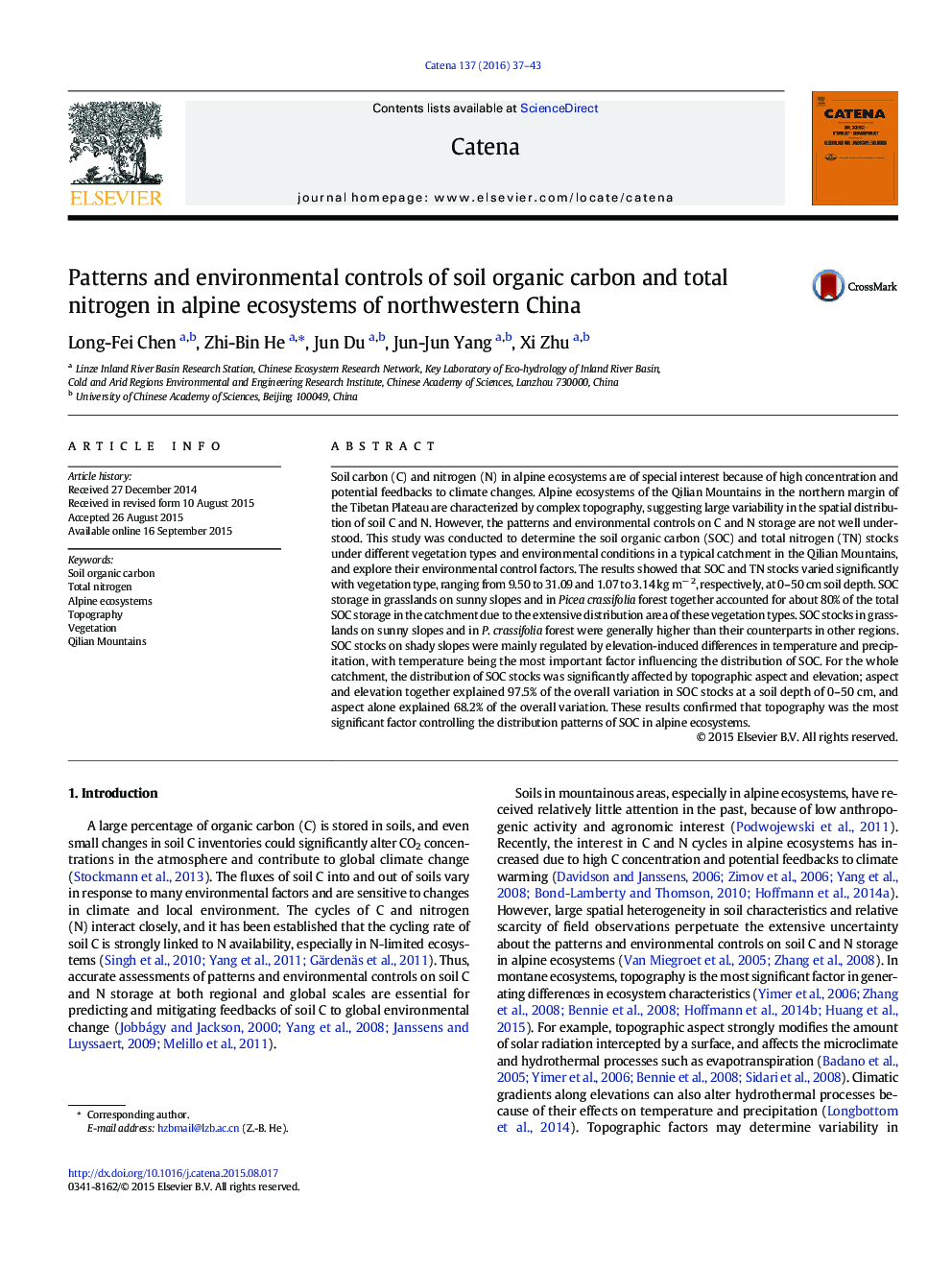| کد مقاله | کد نشریه | سال انتشار | مقاله انگلیسی | نسخه تمام متن |
|---|---|---|---|---|
| 6407922 | 1629215 | 2016 | 7 صفحه PDF | دانلود رایگان |
- Patterns and environmental controls of SOC and TN in alpine ecosystems were studied.
- SOC and TN stocks ranged from 9.50 to 31.09 and 1.07 to 3.14 kg m-2 at 0-50 cm.
- The SOC stocks for shady slopes were mainly regulated by temperature.
- For the whole catchment, SOC stocks were mainly regulated by aspect.
Soil carbon (C) and nitrogen (N) in alpine ecosystems are of special interest because of high concentration and potential feedbacks to climate changes. Alpine ecosystems of the Qilian Mountains in the northern margin of the Tibetan Plateau are characterized by complex topography, suggesting large variability in the spatial distribution of soil C and N. However, the patterns and environmental controls on C and N storage are not well understood. This study was conducted to determine the soil organic carbon (SOC) and total nitrogen (TN) stocks under different vegetation types and environmental conditions in a typical catchment in the Qilian Mountains, and explore their environmental control factors. The results showed that SOC and TN stocks varied significantly with vegetation type, ranging from 9.50 to 31.09 and 1.07 to 3.14 kg mâ 2, respectively, at 0-50 cm soil depth. SOC storage in grasslands on sunny slopes and in Picea crassifolia forest together accounted for about 80% of the total SOC storage in the catchment due to the extensive distribution area of these vegetation types. SOC stocks in grasslands on sunny slopes and in P. crassifolia forest were generally higher than their counterparts in other regions. SOC stocks on shady slopes were mainly regulated by elevation-induced differences in temperature and precipitation, with temperature being the most important factor influencing the distribution of SOC. For the whole catchment, the distribution of SOC stocks was significantly affected by topographic aspect and elevation; aspect and elevation together explained 97.5% of the overall variation in SOC stocks at a soil depth of 0-50 cm, and aspect alone explained 68.2% of the overall variation. These results confirmed that topography was the most significant factor controlling the distribution patterns of SOC in alpine ecosystems.
Journal: CATENA - Volume 137, February 2016, Pages 37-43
